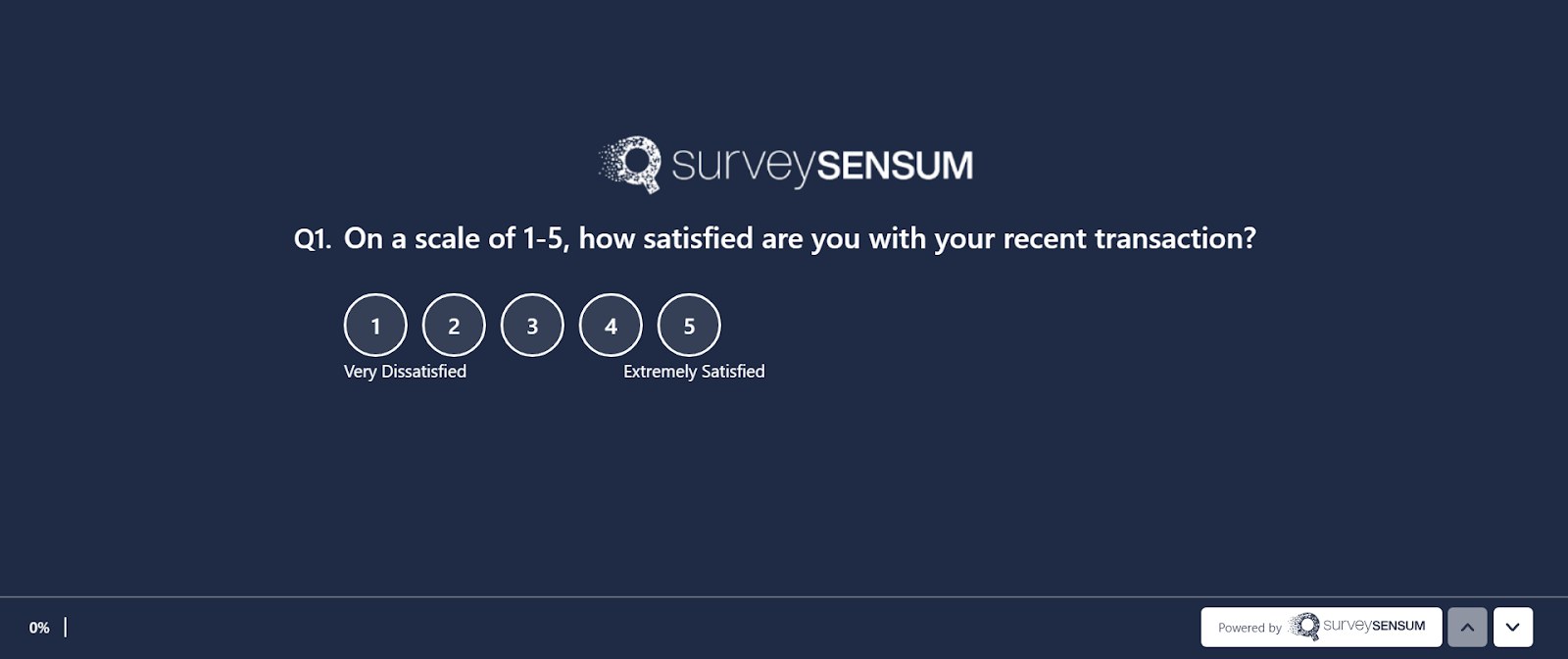Innovative Team Collaboration: 3 Tools for Seamless Project Management
Read More

In the competitive world of real estate, keeping customers happy plays a pivotal role in differentiating your services and enriching your reputation.
For realtors seeking to leave a lasting positive impression on their clients’ minds, understanding how to measure and track customer satisfaction is paramount. This invaluable process offers insights into precisely what clients want and expect from their realtor.
In this article, we will share techniques to help you seamlessly measure and track customer satisfaction.
Surveying clients is an effective tool for measuring customer satisfaction as a realtor. Post-transaction surveys present a golden opportunity to gain in-depth insights into your clients’ experience.

Using user-friendly platforms like SurveySensum, you can automate sending out these questionnaires to your recently served clients. The survey should be designed to capture key elements such as their level of satisfaction with the service received, interaction and communication efficiency throughout the process, and their overall impression of dealing with you as their realtor.
These valuable insights could help identify areas of improvement, such as service delivery and customer relationships, thus allowing you to work on them promptly and improve future customer interactions.
According to statistics, over 90% of online customers will first read reviews before purchasing. Remember, every negative review can be a turnoff to potential customers. While you may not avoid negative reviews altogether, your approach to addressing them can make a huge difference, including changing them to positive reviews.
Online reviews serve as excellent tools to measure customer satisfaction. As a realtor, you can encourage your satisfied customers to share their positive experiences on popular platforms such as Google and Yelp.
Your online reputation significantly affects how potential clients perceive your services. A well-sustained presence can enrich your reputation, attract more customers, and help measure the level of customer satisfaction effectively.
Gauge Customer Satisfaction with SurveySensum
Referral Client rates stand as another reliable measure of customer satisfaction within the real estate sector
A satisfied client is more likely to refer your services to their family, friends, or colleagues. In fact, according to this Real Estate Lead Generation Statistics survey, 22.3% of respondents reported that client referrals is their primary source of getting business. Therefore, if you discover that a notable proportion of your new clients are coming from referrals, this serves as a positive indicator of high customer satisfaction levels.
Prioritize asking your clients at the end of their transactions if they know anyone else who could benefit from your services. This potentially expands your client base and acts as an implicit satisfaction survey.
If you want to get a good idea of how your customers feel, consider launching an NPS survey. It asks the customer one simple question – ‘How likely are you to recommend us to your friends and acquaintances?’, It involves asking for a rating from 0 to 10. The customers who rate you between 9 and 10 are promoters and are most likely to refer others.
The willingness of a client to refer others to you is often indicative of their confidence in and satisfaction with your service delivery.
Following up with clients after a transaction adds an extra layer of care to your service provision, promoting steadfast customer relationships. This goes a long way in expressing your concern and ensuring that they are satisfied even after the sale or purchase process is complete.
You could check in to see if previous clients are settling well into their new homes or if there are any post-sale concerns that you could assist with. Showing genuine interest in customers’ experiences can often prompt them to provide valuable feedback regarding your services.
Remember, these periodic check-ins should be sincere and personal to make the client feel genuinely valued rather than just another successful business transaction. They will appreciate this extra step, leading to higher levels of quality engagements and overall satisfaction.
A clear sign of customer satisfaction is the volume of repeat business you receive. If previous clients are returning to use your services again, it is a bright indication that the service they received initially was pleasing and met their requirements effectively.
High levels of repeat customers not only reflect high levels of client satisfaction but also speak volumes about the trustworthiness and reliability attributed to your business.
Evaluate how many clients return for additional transactions, as this will highlight their level of faith in your work. Keeping track of these trends results in improved understanding and prediction patterns while delivering a seamless way for you to measure customer satisfaction.
CRM tools provide an advantageous means to manage client data efficiently. They offer an organized mechanism that monitors satisfaction levels while integrating effortlessly into the daily routine of a realtor. Enhance your real estate business further by leveraging utilizing CRM solutions through top-notch real estate software development.
A reliable CRM system should allow your business to gather lead data from all the platforms where you have a presence or are running lead generation campaigns, including social media, websites, texts, phone calls, and emails.
It should also be able to digest this data to capture critical insights such as customer preferences, buying power, stage of their buying journey, etc which in turn informs your communication approach to meet their profile. Incorporating local data into CRM systems is crucial for local realtors, for example Eugene real estate agents, to address specific market needs effectively.
Different CRM tools will work best in specific industries. So, for the real estate industry, you will want to invest in a system that is tailor-made for the industry. The internet has many resources where you can get an overview of CRM platforms for real estate, so get to researching before you pick one.
Gauge Customer Satisfaction with SurveySensum
Another way to seamlessly measure and track customer satisfaction is through regular quality assurance calls. This proactive approach involves reaching out to your clients and collecting verbal feedback about their experience with your service.
This conversational format can often feel more personal than automated surveys and allows for a deeper understanding of your client’s perspectives. It also shows clients that you genuinely care about their opinions and welfare.
During such calls, ask specific questions about what they liked or disliked about your services. Ask if there’s anything that you could have done differently or improvements that could make their experience even better going forward.
Adopting this strategy not only helps to identify trends and areas for improvement but also creates an avenue to strengthen the bond with your clients. This mutual dialogue further cements trust and lays a sturdy foundation for future transactions.
Lastly, moving beyond conventional and technical methods, the effectiveness of personal relationships can’t be overlooked. This is intrinsic to achieving lasting customer satisfaction in real estate.
Building strong personal relationships with your customers involves more than just executing transactions. It means maintaining regular, genuine communication, understanding your client’s individual needs, and providing tailored service.
Instead of treating clients as mere business opportunities, consider them partners in a shared journey. Remember that their journey is not only about buying or selling properties. It’s about fulfilling dreams and life goals.
The effort you put into personalizing each interaction will translate into higher levels of customer satisfaction seamlessly. Furthermore, it imbues confidence in your clients and nurtures loyalty to your services – one transaction at a time.
Understanding and improving customer satisfaction is the key to thriving as a realtor in today’s competitive landscape. The news is that the above strategies offer a clear starting point on your journey to weaving a seamless tapestry of service that your clients will appreciate.
But remember, you must harness the techniques you choose effectively and interpret their results insightfully to cultivate an enriched client experience and drive a healthier bottom line.
So, never stop searching for ways to take your service delivery to new heights. Your pursuit of excellence, fueled by persistent efforts to ensure customer satisfaction, will undoubtedly resonate with current clients while attracting many more in the process!
Gauge Customer Satisfaction with SurveySensum
